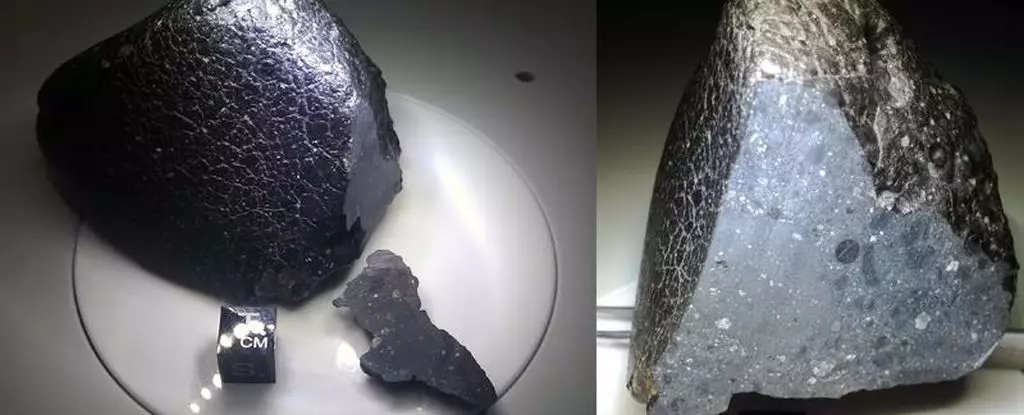The exploration of Mars has always captivated the curiosity of scientists and the public alike. Our ambitions to understand Mars reach back to the earliest days of space exploration, and the recent unveiling of findings related to the ancient presence of water on the planet has added new layers to this intrigue. This exploration into the Martian past not only informs us about the conditions that existed on Mars billions of years ago but also raises significant questions about the possibility of life beyond Earth.
Recent studies have revealed compelling evidence that water was present on Mars as early as 4.45 billion years ago, shortly after the formation of the Solar System. This evidence comes in the form of zircon crystals, tiny yet powerful geological time capsules that hold minerals indicative of the presence of liquid water. These minerals are believed to form only in hot aqueous conditions, such as those found around hydrothermal vents. The presence of such environments on early Mars suggests a planet that was not merely a cold, barren land, but instead had conditions conducive to sustaining life.
Unlike Earth’s extensive oceanic history, the challenging geography of Mars makes it difficult to construct a comprehensive timeline of its water history. Yet, discoveries like the Martian meteorite NWA 7034—affectionately nicknamed ‘Black Beauty’—have provided key insights. This meteorite, found in the Sahara Desert, contains zircon crystals that provide tantalizing clues about the climatic history of Mars. The depth of geological studies into these crystals allows scientists to draw parallels between the formative processes of water on both Earth and Mars.
Geologist Aaron Cavosie has noted a striking parallel between Earth and Mars: both planets displayed significant amounts of water during their earliest days. While Earth has retained substantial quantities of surface water, Mars has undergone a stark transformation. Approximately 4.1 to 3.7 billion years ago, a period known as the Noachian era, shows our strongest geological evidence for the existence of liquid water on Mars. During this timeframe, Earth was teeming with microbial life. The comparable conditions on Mars during the same period give rise to the tantalizing possibility that life may have also emerged under similar circumstances there.
This connection between the two planets emphasizes the idea that Mars’s climatic evolution diverged sharply from that of Earth. The changing conditions over billions of years have shaped Mars into the arid world we see today, leading researchers to ask what processes drove those changes. Was it the loss of its once-thick atmosphere, volcanic activity, or perhaps the impact of asteroid bombardments?
The investigation into the NWA 7034 meteorite has proven to be a remarkable avenue for understanding ancient Mars. Scientists led by geochemist Jack Gillespie employed advanced nanoscale microscopy to analyze the composition of the zircon crystals. This analysis unveiled a layered structure within the mineral, revealing elements like iron and sodium—characteristics typically absent in zircon formations on Earth. The resemblance between Martian zircons and those found in Earth’s Olympic Dam—a site recognizable for its rich mineral deposits—suggests that similar geological processes might have occurred on both planets.
This revelation leads to further speculation regarding the environmental conditions that fostered the creation of such zircons. Cavosie’s research implies that hot aqueous fluids, possibly rich in minerals, percolated through Mars’s crust and played an essential role in the deposition of these trace elements. Therefore, it sparks the question of whether Mars also had extensive hydrothermal systems akin to those we find today in geothermal regions on Earth, like Yellowstone.
Although we have gathered significant evidence supporting the presence of ancient water on Mars, many questions remain unanswered. The specific temperature of this water remains elusive, as does its volume and the origins of the geological processes that heated it. Was this hydrothermal activity a byproduct of Mars’s internal mechanisms or driven primarily by external factors such as asteroid collisions?
The survival story of the zircon crystals themselves—from their formation in a wet, hot environment, to their violent ejection into space, and finally landing on Earth—underscores the dynamic, ever-changing nature of planetary bodies. These minerals are not just geological artifacts; they are storytellers that recount the environmental conditions of a planet long before any of us existed.
As research advances, the continuing study of meteorites like NWA 7034 will likely offer profound insights into the rich history of not just Mars, but the broader narrative of our Solar System. Each new finding adds depth to our understanding of how planets evolve and change over time, and the ever-present questions surrounding life beyond our own planet continue to intrigue scientists and enthusiasts alike. With each discovery, we come one step closer to answering the fundamental questions of where we came from and if we are alone in the universe.


Leave a Reply